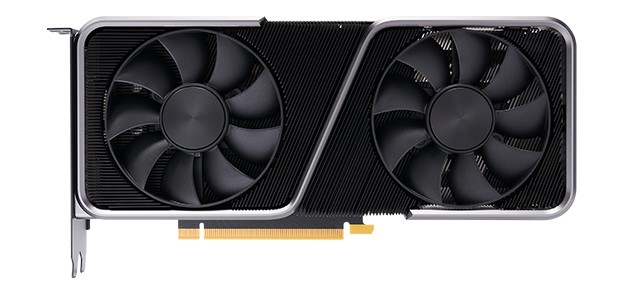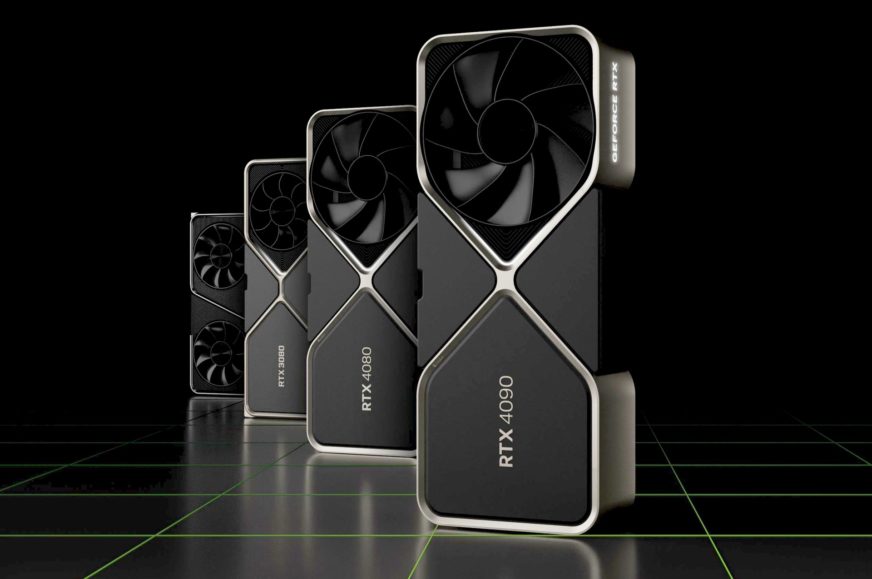GeForce RTX 4060 Ti and RTX 4070: finally new GPUs that have lower power draw than previous generations?
It was all the way back in December that the overall specs of cheaper Ada generation GPUs, GeForce RTX 4070 and GeForce RTX 4060 Ti, became known. But it looks like they may be launched in a slightly different form than the company intended at the time. According to proven leaker Kopite7kimi, these graphics cards will have a significantly lower TDP than previous leaks have claimed, and could be quite low-power and efficient GPUs.
When Kopite7kimi reported information about the GeForce RTX 4060 Ti for the first time (a month and a bit ago), we learned that the card uses an AD106-350 chip that supposedly contains 4352 shaders (34 SM blocks) and 32MB of L2 cache. It’s too early for us getting the actual clock speeds too, but the card is said to use 8GB of GDDR6 memory, which will run at 18.0GHz (effective clock). This will give it a bandwidth of 288 GB/s as the AD106 GPU is only supposed to have a 128-bit bus.
It was also said at that time that this card, which is supposed to have a very short PCB (with a 16-pin power connector) in the reference form, would have a TDP of 220 W. That would be the same power draw as the GeForce RTX 3070 in the previous generation. And higher than what the RTX 3060 Ti used (200W), not to mention the older RTX 2070 and GTX 1070 models.
However, this is what is said to have changed. Kopite7kimi is now reporting that Nvidia has rethought its policy and the GeForce RTX 4060 Ti will reportedly be toned down to a TDP of just 160W, which is a pretty drastic reduction. In this case, the card would have an even lower TDP than the existing GeForce RTX 3060 (170W). So it could be a relatively power-efficient graphics card. That being said, it is also possible that the performance the graphics is targeted for will be shifted down with this reduction, compared to what could have been with the previously intended 220W configuration.
After correction, 160W. https://t.co/thAbqh0Ndq
— kopite7kimi (@kopite7kimi) January 18, 2023
RTX 4070 also lower-power?
According to Kopite7kimi, more Ada models have undergone this change and we can also reportedly expect a TDP reduction for the GeForce RTX 4070. Its specifications were also revealed last month – it is to have an AD104 chip with a total of 5888 shaders (46 active SMs), 32MB L2 cache and 192-bit GDDR6X memory with a capacity of 12 GB and a bandwidth of 504 GB/s (21 GHz effective clock speed).
According to December’s first version of the specifications, this card was supposed to have a TDP of 250 W. This is going to change but the new chosen value is not yet known. Perhaps it could be somewhere around 200 W, if we had to guess. Again, this would mean the power draw in this particular class of cards will go down, which would be quite welcome, because for a long time graphics card manufacturers have instead been pushing the power draw higher and higher (particularly happening on Nvidia’s side in recent years).

Kopite7kimi states that the card does not have the internal designation PG141-SKU336/337 as originally stated, but PG141-SKU343/344/345. This could indicate some other changes being made. As with the GeForce RTX 4060 Ti, it’s possible that the card will move a bit lower o the performance curve with the power draw reduction, as it will achieve lower resulting clock speeds in games.
Why is Nvidia reducing power draw? It’s possible that chips made with the 4nm process are behaving better than the company originally intended, and so it’s possible to achieve better performance-per-watt with them. But it’s also possible that Nvidia is adjusting the policies to a world where the electricity costs are rising dramatically and there’s suddenly more pressure to save power. But it may also be a rethinking of the competitive situation, where Nvidia believes that it won’t need as much performance as originally expected against competing Radeon graphics cards…
English translation and edit by Jozef Dudáš
⠀








